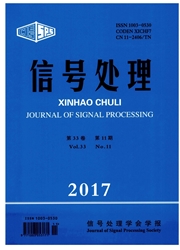

 中文摘要:
中文摘要:
本文将传统的应急通信系统与认知无线电技术相结合,在授权用户、应急用户和一般认知用户这三类用户共享频谱池的前提下,提出了两种不同接入等级的认知无线电接入策略。在这两种接入策略下,对系统动态频谱接入过程,构建了基于三维马尔可夫链的分析模型。在该模型基础上推导了应急用户和其它认知用户的阻塞率及强制终止概率,给出了它们的数学闭合表达式,并对系统性能进行了分析。仿真结果表明:三级优先级接入策略,使得应急用户的阻塞率和强制终止概率得到了降低,该策略的采用很大程度上提高了应急用户的性能。
 英文摘要:
英文摘要:
In this paper,traditional emergency communication system and cognitive radio technology are combined together.Two different-level access strategies are proposed on the premise that the primary user,the emergency user and the ordinary secondary user are sharing one spectrum pooling.A three-dimension Markov chain is developed to construct an analysis model for the dynamic spectrum access of the system under these two access strategies.On the basis of this model,blocking probability and forced termination probability of emergency user and the other cognitive user are deduced.Also,the closed-form expressions of the blocking probability and forced termination probability are given and the system performance is analyzed.Simulation results show that the strategy of three-level priority access can degrade the blocking probability and the forced termination probability of the emergency user.This strategy is able to significantly improve the performance of emergency system.
 同期刊论文项目
同期刊论文项目
 同项目期刊论文
同项目期刊论文
 Signal Constellations Design for Differential Unitary Space-time in MIMO-OFDM System over Frequency-
Signal Constellations Design for Differential Unitary Space-time in MIMO-OFDM System over Frequency- Cross-Layer Combining of Power Control and Adaptive Modulation with Truncated ARQ for Cognitive Radi
Cross-Layer Combining of Power Control and Adaptive Modulation with Truncated ARQ for Cognitive Radi 期刊信息
期刊信息
